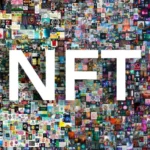With the rapid rise of blockchain technology and digital assets, Non-Fungible Tokens (NFTs) have gained immense popularity.
These unique digital assets, often representing art, music, collectibles, and virtual real estate, require secure storage to protect them from theft, fraud, and loss.
This article explores how to securely store your NFTs in a digital wallet, best practices for protection, and additional security measures to safeguard your investments.
We will also delve into advanced storage strategies, the role of smart contracts in NFT security, and the potential risks associated with different storage methods.
Understanding NFTs and Digital Wallets
NFTs are digital assets that are verified using blockchain technology, ensuring their uniqueness and ownership.
Unlike cryptocurrencies, NFTs are indivisible and cannot be exchanged on a one-to-one basis. To store and manage NFTs, you need a digital wallet that supports NFT transactions.
Types of Digital Wallets for NFTs
| Wallet Type | Description | Security Level | Examples |
|---|---|---|---|
| Hot Wallets | Online wallets connected to the internet. | Medium | MetaMask, Trust Wallet, Phantom |
| Cold Wallets | Hardware wallets stored offline. | High | Ledger Nano X, Trezor |
| Custodial Wallets | Third-party services holding assets on your behalf. | Low-Medium | Coinbase Wallet, Binance Wallet |
| Non-Custodial Wallets | Users hold private keys and full control over assets. | High | MetaMask, Trust Wallet |
| Paper Wallets | Printed private keys for offline storage. | High | Manually created |
| Multi-Signature Wallets | Requires multiple approvals for transactions. | Very High | Gnosis Safe |
ALSO READ: How to Provide Liquidity in DeFi and Earn Rewards?
Steps to Store Your NFTs Securely

Choose a Secure Wallet
Selecting the right wallet is crucial for the security of your NFTs. While hot wallets provide convenience, cold wallets offer enhanced security. It is recommended to use a combination of both to balance accessibility and safety.
Enable Two-Factor Authentication (2FA)
Many wallets support 2FA, adding an extra layer of security to prevent unauthorized access. Using biometric authentication where available is an added advantage.
Backup Your Recovery Phrase
When setting up a wallet, you will receive a recovery phrase (also known as a seed phrase). Store this securely in multiple offline locations and never share it with anyone.
Use a Hardware Wallet
For long-term storage, hardware wallets such as Ledger Nano X or Trezor provide the best protection by keeping your private keys offline and safe from online threats.
Keep Software and Firmware Updated
Regularly updating your wallet software and hardware firmware ensures you are protected against vulnerabilities and security threats. Hackers often exploit outdated software.
Avoid Phishing Scams
Be cautious of malicious links and fraudulent websites that attempt to steal your wallet credentials. Always verify website URLs before entering sensitive information, and never click on suspicious links.
Use a Separate Device for NFT Transactions
For higher security, consider using a dedicated device for NFT-related transactions to minimize exposure to malware and keyloggers. A dedicated hardware device can significantly reduce risks.
Store NFTs in Multiple Wallets
Diversifying storage by keeping different NFTs in separate wallets reduces the risk of losing all assets in case of a security breach. Keeping high-value NFTs in cold wallets is highly recommended.
Implement Multi-Signature Authentication
Using wallets that require multiple approvals for transactions can add another layer of security, preventing unauthorized transfers of your assets.
Best Practices for NFT Security
| Best Practice | Explanation |
|---|---|
| Use Strong Passwords | Ensure your wallet passwords are unique and complex. |
| Avoid Public Wi-Fi | Conduct transactions only on secure networks to prevent hacking. |
| Regularly Monitor Transactions | Check your wallet for unauthorized activities. |
| Disable Browser Extensions | Malicious extensions can compromise security; disable unnecessary ones. |
| Utilize Multi-Signature Authentication | Requires multiple approvals for transactions, adding an extra security layer. |
| Use Encrypted USB Storage | Encrypt backups and store them in secure locations. |
| Enable Whitelisting | Some wallets allow transaction whitelisting to limit potential scams. |
ALSO READ: How to Send and Receive Cryptocurrency Transactions Easily?
Additional Security Measures

Using a Vault or Safe for Seed Phrases
Since seed phrases are essential for wallet recovery, storing them in a fireproof and waterproof safe is highly recommended. Some users also engrave them on metal for durability.
Smart Contract Audits
Before purchasing NFTs, ensure that the smart contract has been audited by reputable firms to reduce the risk of vulnerabilities. Unverified smart contracts may contain loopholes that hackers can exploit.
Avoiding Social Engineering Attacks
Cybercriminals often use social engineering tactics to trick users into revealing sensitive information.
Be cautious of unsolicited messages, suspicious links, and impersonators who claim to be customer support.
Insurance for NFTs
Some companies offer NFT insurance policies to cover potential losses due to hacks or theft. Exploring these options can provide an additional safety net and financial security.
Understanding Gas Fees and Transaction Safety
Gas fees on blockchains like Ethereum can be high. Always double-check transaction details before confirming them, as errors in sending NFTs can be irreversible.
Using Decentralized Storage Solutions
Some NFT metadata is stored off-chain, making it vulnerable if the storage provider fails. Consider decentralized storage options like IPFS (InterPlanetary File System) or Arweave to ensure longevity.
Cold Storage with Air-Gapped Devices
For the highest level of security, some users opt for air-gapped devices (devices that have never been connected to the internet) to store their wallet information. This method is useful for high-value NFT investors.
Legal Considerations and Estate Planning
As NFTs become valuable assets, planning for their transfer in case of unforeseen circumstances is essential. Securely document recovery details and include them in estate planning strategies.
ALSO READ: How to Calculate the Costs of Buying and Holding Cryptocurrencies?
Conclusion
Securing your NFTs requires a combination of the right digital wallet, strong security practices, and constant vigilance against cyber threats.
Whether you are an artist, collector, or investor, following these steps will help protect your valuable digital assets from potential risks.
By leveraging the latest security measures, diversifying storage methods, and staying informed about evolving threats, you can ensure the long-term safety of your NFT investments.
In an ever-growing digital landscape, taking proactive security steps will safeguard your NFTs from both technological and human-based risks.







